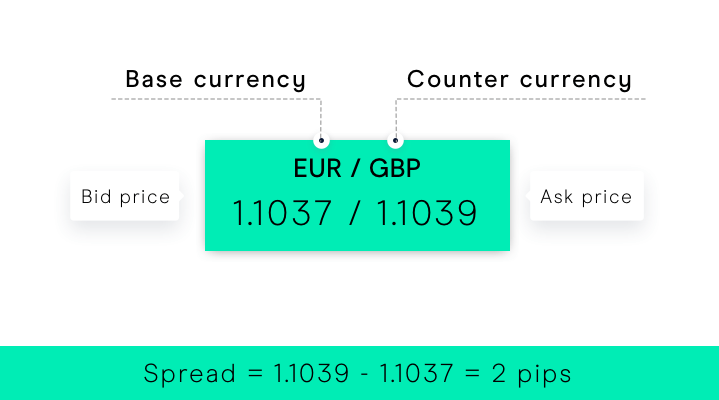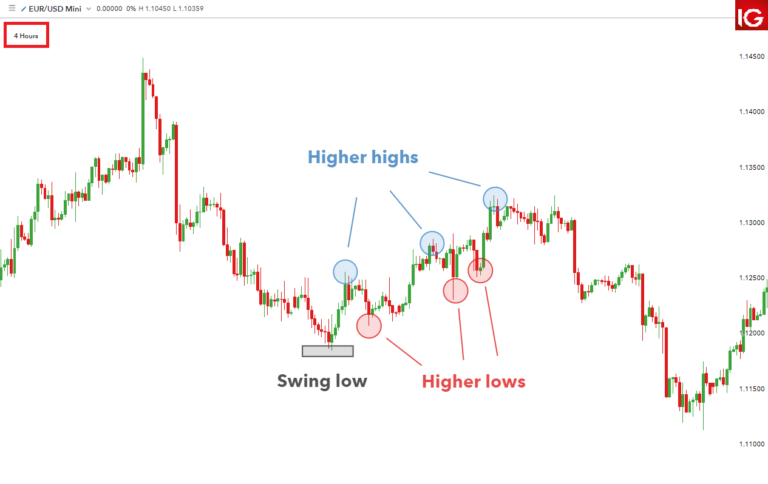Introduction
In the realm of forex trading, various terms and concepts play significant roles in shaping trading strategies and outcomes. One such term is “swap.” Understanding what swaps are, how they work, and their impact on profits is crucial for any forex trader aiming to navigate the markets effectively. This article serves as a comprehensive guide to forex swap, covering everything from its definition to strategies, advantages, risks, calculations, and common mistakes to avoid.
What is Swap in Forex?
In forex trading, a swap refers to the interest rate differential between the two currencies being traded. It’s the overnight or rollover interest that traders either pay or receive for holding positions overnight. Essentially, when traders hold positions past the daily cutoff time, they either earn or pay interest depending on the interest rate differential between the currency pairs.
How Does Swap Work and Affect Your Profits?
Swap works based on the interest rate differentials set by central banks of respective currencies. If a trader is long on a currency pair with a higher interest rate than the one they are short on, they typically earn a swap, as they’re effectively lending the currency with the higher interest rate while borrowing the one with the lower interest rate. Conversely, if the situation is reversed, they’ll pay a swap.
Forex Swap Trading Strategies
Forex Swap Trading Strategies
Trading the forex market involves a myriad of strategies aimed at maximizing profits while managing risks effectively. Among these strategies, forex swap trading strategies stand out for their ability to leverage interest rate differentials and hedge against currency risk. Let’s delve deeper into these strategies:
- Carry Trade Strategy:
The carry trade strategy is one of the most popular and straightforward forex trading strategies, revolving around interest rate differentials between currency pairs. The fundamental principle behind the carry trade is to borrow funds in a currency with a low-interest rate and invest them in a currency with a higher interest rate.
Here’s how it works:
a. Identify Currency Pairs: Traders first identify currency pairs where there’s a significant interest rate differential between the base and quote currencies. Typically, traders look for pairs where the base currency has a higher interest rate than the quote currency.
b. Borrowing and Investing: Traders borrow funds in the low-interest-rate currency and simultaneously invest them in the high-interest-rate currency. This can be done by opening a long position (buy) in the high-interest-rate currency pair.
c. Earning Swaps: By holding the position overnight, traders earn swap income from the interest rate differential between the two currencies. The longer the position is held, the more swap income can be accumulated.
d. Monitoring Economic Conditions: It’s essential for carry trade traders to monitor economic conditions, central bank policies, and interest rate outlooks for both currencies involved. Changes in interest rate differentials or economic fundamentals can impact the profitability of the carry trade.
e. Managing Risk: Despite its potential for profit, the carry trade strategy carries inherent risks, especially related to exchange rate fluctuations. Traders must employ risk management techniques such as setting stop-loss orders and diversifying their portfolios to mitigate these risks.
- Hedge Swap Strategy:
The hedge swap strategy involves using forex swaps to hedge against currency risk arising from exchange rate fluctuations. Currency risk refers to the potential losses or gains that can occur due to changes in exchange rates.
Here’s how the hedge swap strategy works:
a. Identifying Exposure: Traders identify currency exposures within their portfolios that are susceptible to exchange rate fluctuations. This could include assets denominated in foreign currencies or future cash flows in different currencies.
b. Entering Offset Positions: To hedge against currency risk, traders enter into offsetting positions in the forex market that mirror their existing exposures. For example, if a trader expects the value of a foreign currency asset to depreciate, they may enter into a short position (sell) in the corresponding currency pair.
c. Utilizing Swaps: Swaps play a crucial role in the hedge swap strategy by allowing traders to adjust their currency exposures without necessarily closing their existing positions. By earning or paying swaps on these offsetting positions, traders can mitigate the impact of exchange rate fluctuations on their overall portfolio.
d. Monitoring and Adjusting: Traders need to monitor their hedge positions regularly and adjust them as market conditions change. This may involve rolling over swap positions or closing out positions entirely if the original risk scenario no longer applies.
e. Cost Considerations: While swaps can be an effective hedging tool, traders must also consider the cost implications, including swap rates and any associated broker fees. These costs should be factored into the overall risk-return analysis of the hedge swap strategy.
In conclusion, forex swap trading strategies offer traders versatile tools for generating income and managing risk in the dynamic currency markets. Whether through the carry trade strategy’s exploitation of interest rate differentials or the hedge swap strategy’s mitigation of currency risk, traders can leverage swaps to optimize their trading outcomes. However, it’s essential for traders to conduct thorough analysis, implement robust risk management practices, and remain vigilant in monitoring market conditions to succeed in forex swap trading.
Advantages of Forex Swap
Advantages of Forex Swap
Forex swaps offer several advantages to traders, ranging from additional income streams to effective risk management tools. Understanding these advantages is crucial for traders looking to optimize their trading strategies and outcomes. Let’s explore these advantages in detail:
- Additional Income:
One of the primary advantages of forex swaps is their ability to provide traders with an additional source of income. This income is earned through the interest rate differentials between the currency pairs being traded. When traders hold positions overnight, they either earn or pay interest, depending on the direction of the interest rate differentials.
For longer-term positions, swaps can significantly contribute to a trader’s overall profitability. By strategically holding positions in currency pairs with favorable interest rate differentials, traders can accumulate swap income over time, adding to their bottom line.
Moreover, the passive nature of swap income makes it particularly attractive to traders seeking to diversify their revenue streams. Instead of actively trading, traders can earn income simply by holding positions open overnight, making swaps a valuable component of a comprehensive trading strategy.
- Risk Management:
In addition to generating income, forex swaps can also be utilized for risk management purposes. Currency risk, or the risk of losses resulting from adverse movements in exchange rates, is a significant concern for traders operating in the forex market. Swaps offer an effective means of hedging against this risk.
Traders can use swaps to hedge existing currency exposures by entering into offsetting positions that neutralize the effects of exchange rate fluctuations. By simultaneously holding long and short positions in correlated currency pairs, traders can mitigate the impact of adverse exchange rate movements on their portfolios.
For example, if a trader holds a long position in a currency pair but anticipates a potential depreciation in the base currency, they can enter into a short position in the same pair or a correlated pair to offset their exposure. Any losses incurred on one position may be offset by gains on the other, thereby reducing overall risk.
Types of Swap: Positive and Negative
Forex swaps can be categorized into two main types based on their impact on traders’ accounts: positive swaps and negative swaps.
- Positive Swap:
Positive swap occurs when the interest rate of the currency being bought is higher than the one being sold. In this scenario, traders receive a credit to their accounts as compensation for holding the position overnight. Positive swaps are desirable for traders as they contribute to overall profitability, especially for longer-term positions.
- Negative Swap:
Conversely, negative swap occurs when the interest rate of the currency being bought is lower than the one being sold. In this case, traders incur a debit to their accounts for holding the position overnight. Negative swaps can erode profits and should be carefully considered by traders, especially when planning longer-term positions.
Understanding the types of swaps and their implications is essential for traders looking to optimize their trading strategies and manage their risk exposure effectively. By leveraging positive swaps for additional income and employing hedging techniques to mitigate the impact of negative swaps, traders can enhance their overall trading performance and achieve their financial goals in the forex market.
Risks Associated with Forex Swap
- Interest Rate Risk: Changes in interest rates can affect swap rates, potentially leading to unexpected gains or losses for traders.
- Market Risk: Market volatility can impact swap rates, leading to fluctuations in profits and losses for traders holding positions overnight.
Factors that Affect Swap Rates
Factors that Affect Swap Rates
Swap rates, which represent the overnight interest rate differentials between currency pairs, are influenced by a variety of factors in the forex market. Understanding these factors is essential for traders to anticipate and adapt to changes in swap rates effectively. Let’s explore the key factors that influence swap rates:
- Central Bank Policies:
Central banks play a crucial role in shaping swap rates through their monetary policies. Monetary policy decisions, such as changes in interest rates or quantitative easing measures, directly impact the borrowing and lending rates in the interbank market. Since swap rates are derived from these interbank lending rates, any adjustments made by central banks can influence swap rates accordingly.
For example, if a central bank raises interest rates in response to inflationary pressures, the borrowing costs in the respective currency may increase, leading to higher swap rates for traders holding long positions in that currency pair. Conversely, a central bank’s decision to lower interest rates to stimulate economic growth may result in lower swap rates.
Traders closely monitor central bank announcements, economic reports, and speeches by central bank officials to gauge the direction of monetary policy and anticipate potential changes in swap rates.
- Market Sentiment:
Market sentiment, which reflects the collective mood and outlook of traders and investors, can significantly impact swap rates. Economic data releases, geopolitical events, and shifts in investor sentiment can influence market expectations regarding future interest rate movements, thereby affecting swap rates.
Positive economic data indicating robust economic growth or rising inflationary pressures may lead traders to anticipate tightening monetary policies by central banks, resulting in higher swap rates. Conversely, negative economic data or geopolitical uncertainties may prompt expectations of accommodative monetary policies, leading to lower swap rates.
In addition to economic fundamentals, technical factors such as trading volumes, liquidity conditions, and speculative positioning can also influence market sentiment and contribute to fluctuations in swap rates.
Traders utilize various analytical tools, including fundamental analysis and sentiment indicators, to assess market sentiment and its potential impact on swap rates. By staying informed about current events and market developments, traders can make more informed decisions regarding their swap-related strategies and positions.
In conclusion, swap rates in the forex market are subject to the influence of central bank policies and market sentiment. Traders must closely monitor developments in monetary policy, economic indicators, and market sentiment to anticipate changes in swap rates and adjust their trading strategies accordingly. By staying vigilant and adaptive, traders can effectively navigate the dynamic landscape of swap trading and optimize their trading outcomes.
How to Calculate Swap
Swap calculation involves the overnight interest rate differentials between the currency pairs being traded, adjusted for any applicable broker fees or adjustments. Most trading platforms provide swap calculators or display swap rates directly.
Foreign Exchange Swap vs. Cross Currency Swap
While both types of swaps involve exchanging one currency for another, foreign exchange swaps typically involve the exchange of principal amounts at the beginning and end of the contract, whereas cross currency swaps involve exchanging interest payments in different currencies over a specified period.
Common Mistakes to Avoid in Forex Swap
Common Mistakes to Avoid in Forex Swap
Forex swap trading offers lucrative opportunities for traders to earn additional income and manage risk effectively. However, certain common mistakes can undermine the potential benefits of swap trading and lead to adverse outcomes. By recognizing and avoiding these mistakes, traders can enhance their chances of success in the forex market. Let’s explore two key mistakes to avoid in forex swap trading:
- Ignoring Swap Rates:
One of the most common mistakes made by traders is overlooking swap rates when planning their trades. Swap rates represent the overnight interest rate differentials between currency pairs and can have a significant impact on the profitability of positions held overnight. Failure to consider swap rates can result in unexpected costs or missed opportunities for profit.
For example, traders may focus solely on short-term price movements and technical indicators when entering trades, neglecting to account for the potential costs or benefits of holding positions overnight. As a result, they may inadvertently incur negative swaps that erode their profits or miss out on positive swaps that could have enhanced their returns.
To avoid this mistake, traders should incorporate swap rates into their trading analysis and decision-making process. This involves assessing the potential swap income or cost associated with holding positions overnight and factoring it into their risk-reward calculations. By considering swap rates alongside other factors such as price action, technical analysis, and fundamental data, traders can make more informed trading decisions and optimize their overall profitability.
- Overleveraging:
Another common mistake in forex swap trading is using excessive leverage, which can amplify the impact of swap rates on profits and losses. Leverage allows traders to control larger positions with a relatively small amount of capital, magnifying both potential gains and losses. While leverage can increase the profitability of trades, it also increases the risk of significant losses, especially when combined with unfavorable swap rates.
For example, traders who overleverage their positions may find themselves paying substantial amounts in negative swaps if they hold positions overnight in currency pairs with low-interest rates. Additionally, overleveraged positions are more vulnerable to margin calls and forced liquidations, particularly in volatile market conditions.
To avoid this mistake, traders should exercise prudent risk management and use leverage judiciously. This involves setting appropriate leverage ratios based on risk tolerance, maintaining adequate margin levels, and avoiding excessive exposure to any single trade or currency pair. By prioritizing capital preservation and avoiding excessive leverage, traders can mitigate the impact of swap rates on their trading accounts and reduce the risk of significant losses.
In conclusion, avoiding common mistakes such as ignoring swap rates and overleveraging is essential for success in forex swap trading. By incorporating swap rates into their trading analysis and exercising prudent risk management, traders can maximize their profitability and minimize potential losses in the dynamic and competitive forex market.
Conclusion
Forex swap plays a crucial role in the global currency markets, providing traders with opportunities to earn additional income and manage risk. By understanding how swap works, implementing effective trading strategies, and being mindful of associated risks, traders can harness the power of swaps to enhance their trading outcomes. However, it’s essential to remain vigilant, continuously monitor swap rates, and adapt strategies accordingly to navigate the dynamic forex market successfully.
Read our latest article on Forex Trading Signals
FAQs
- What is a forex swap?Answer: A forex swap refers to the interest rate differential between two currencies being traded, which traders either earn or pay for holding positions overnight.
- How do forex swap rates affect trading profits?Answer: Forex swap rates can impact trading profits by adding to or subtracting from the overall profitability of positions held overnight, depending on whether the swap is positive or negative.
- What are some common forex swap trading strategies?Answer: Common forex swap trading strategies include the carry trade strategy, which exploits interest rate differentials, and the hedge swap strategy, which is used to hedge against currency risk.
- What are the advantages of forex swaps?Answer: Forex swaps offer advantages such as providing additional income through swap rates and serving as effective tools for risk management by hedging against currency risk.
- What are positive and negative swaps?Answer: Positive swaps occur when the interest rate of the currency being bought is higher than the one being sold, resulting in a credit to the trader. Negative swaps occur when the opposite is true.
- What factors influence swap rates in forex trading?Answer: Swap rates in forex trading are influenced by factors such as central bank policies, including changes in interest rates, and market sentiment, which reflects traders’ expectations regarding future interest rate movements.
- How can traders calculate swap rates?Answer: Traders can calculate swap rates using formulas provided by their brokers or through online swap calculators, taking into account factors such as the currency pair, position size, and rollover interest rates.
- What are some common mistakes to avoid in forex swap trading?Answer: Common mistakes to avoid in forex swap trading include ignoring swap rates when planning trades and overleveraging, which can amplify the impact of swap rates on profits and losses.
- How can traders mitigate the risks associated with forex swaps?Answer: Traders can mitigate risks associated with forex swaps by incorporating swap rates into their trading analysis, using leverage judiciously, and implementing effective risk management strategies.
- What role do central banks play in influencing swap rates?Answer: Central banks influence swap rates through their monetary policies, such as changes in interest rates, which impact borrowing and lending rates in the interbank market, thereby affecting swap rates in forex trading.
Click here to read more on Forex Swaps





